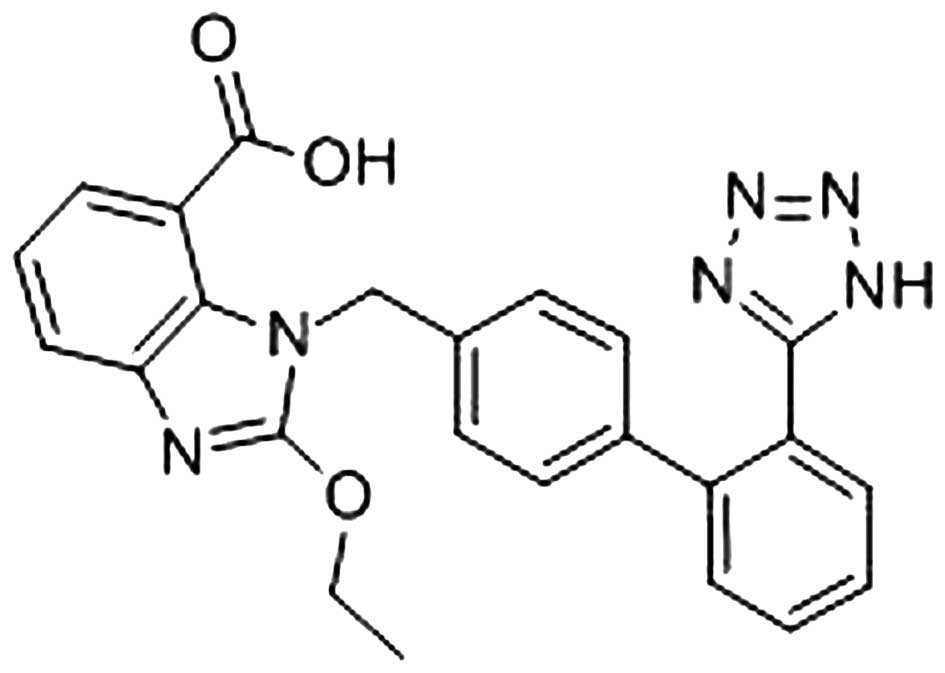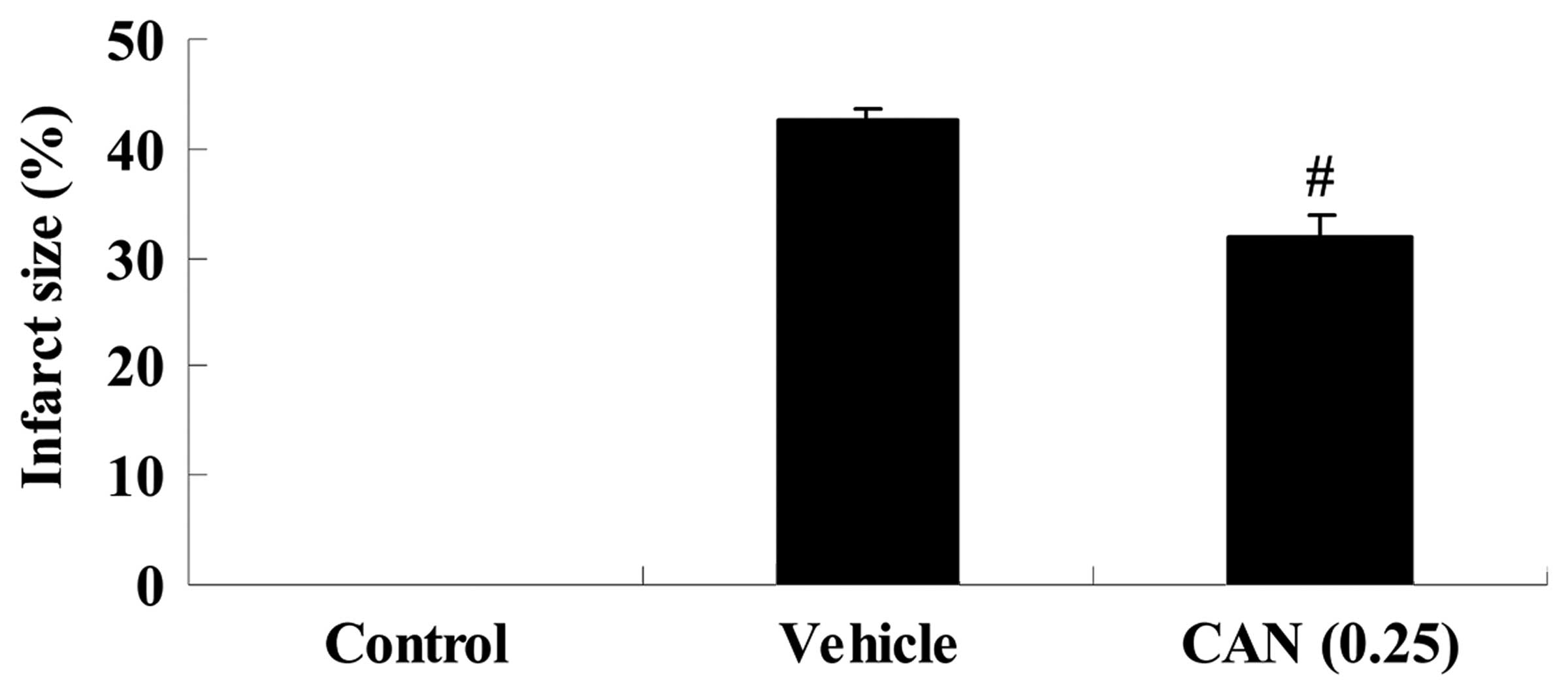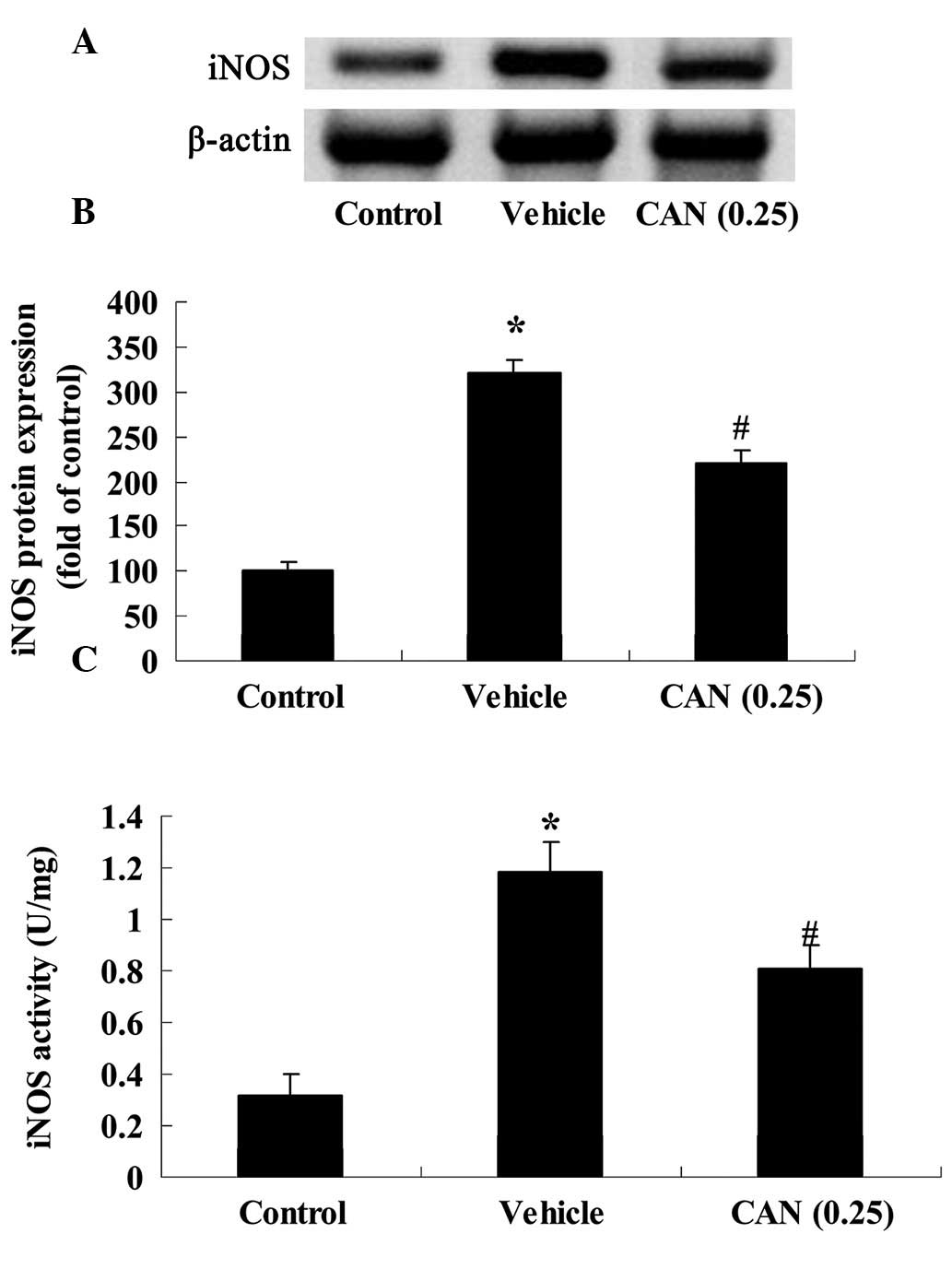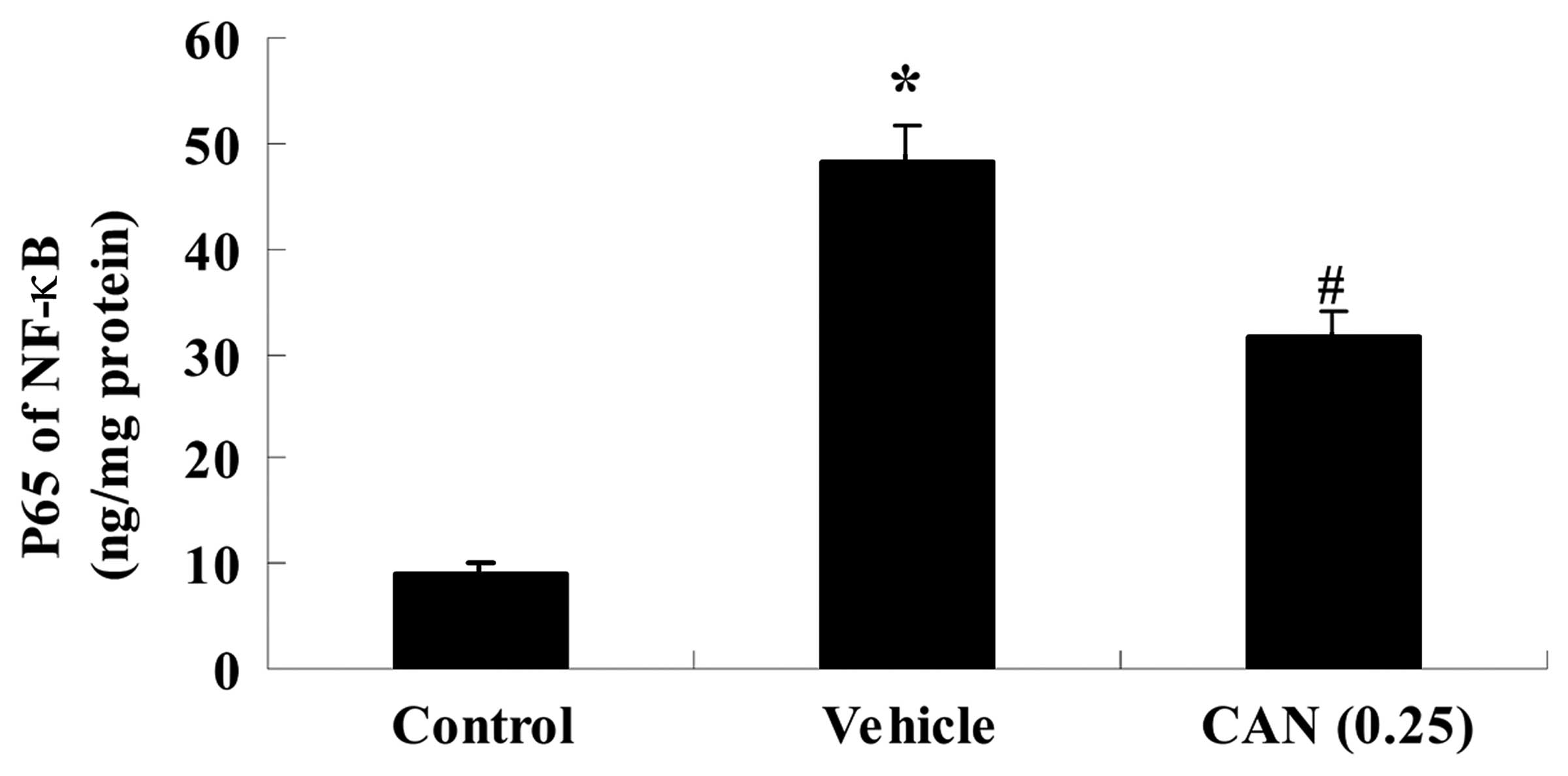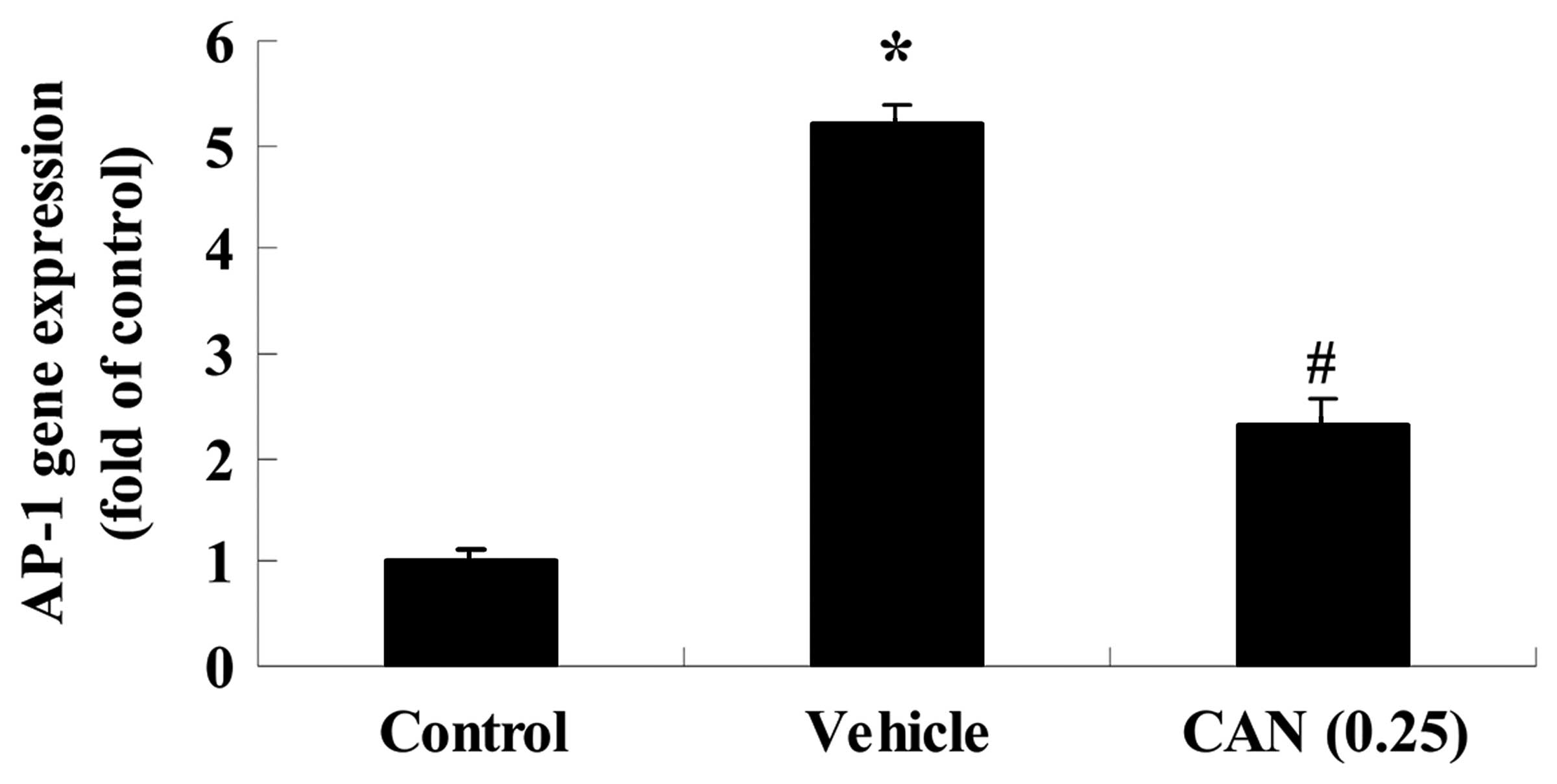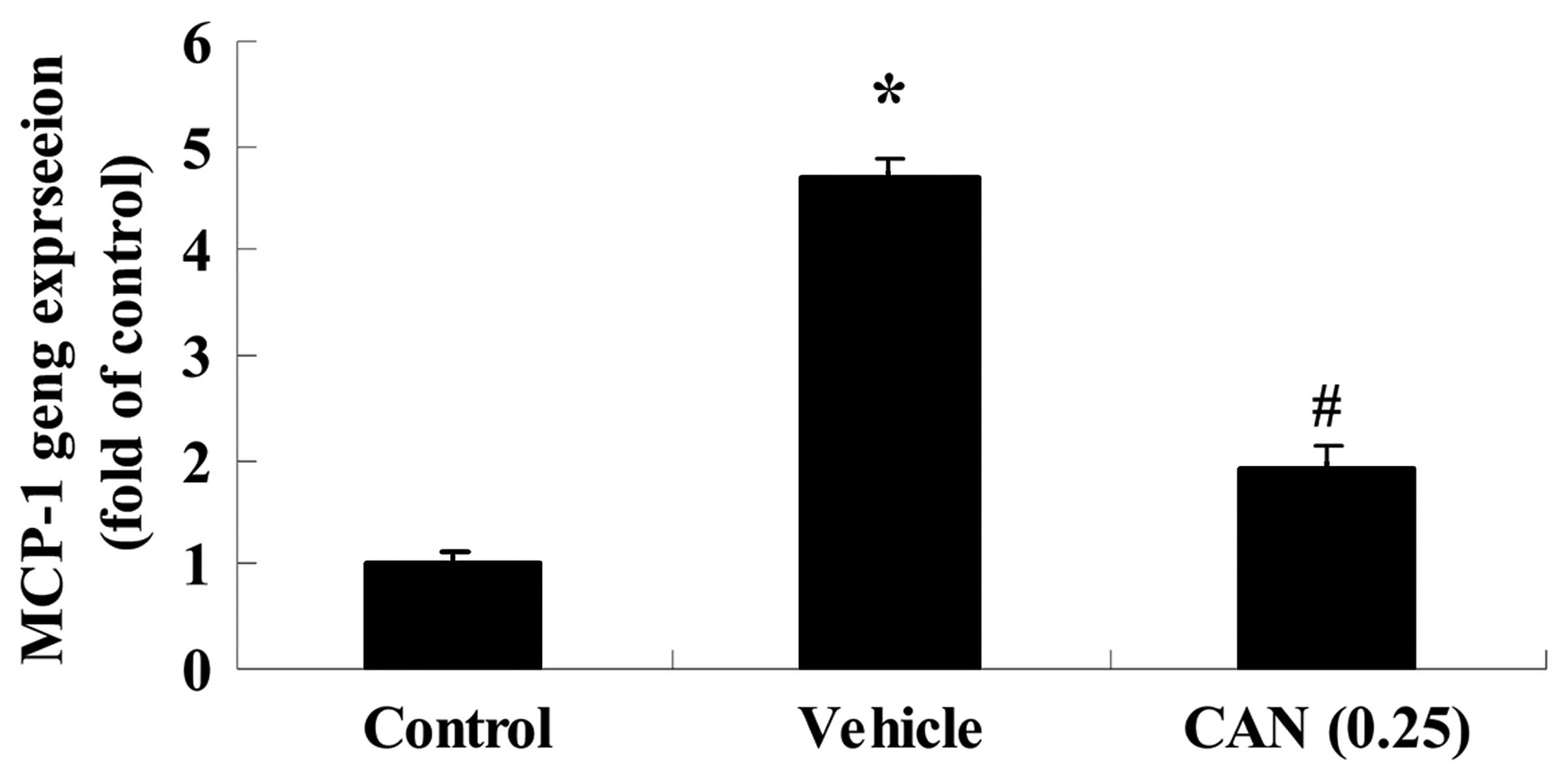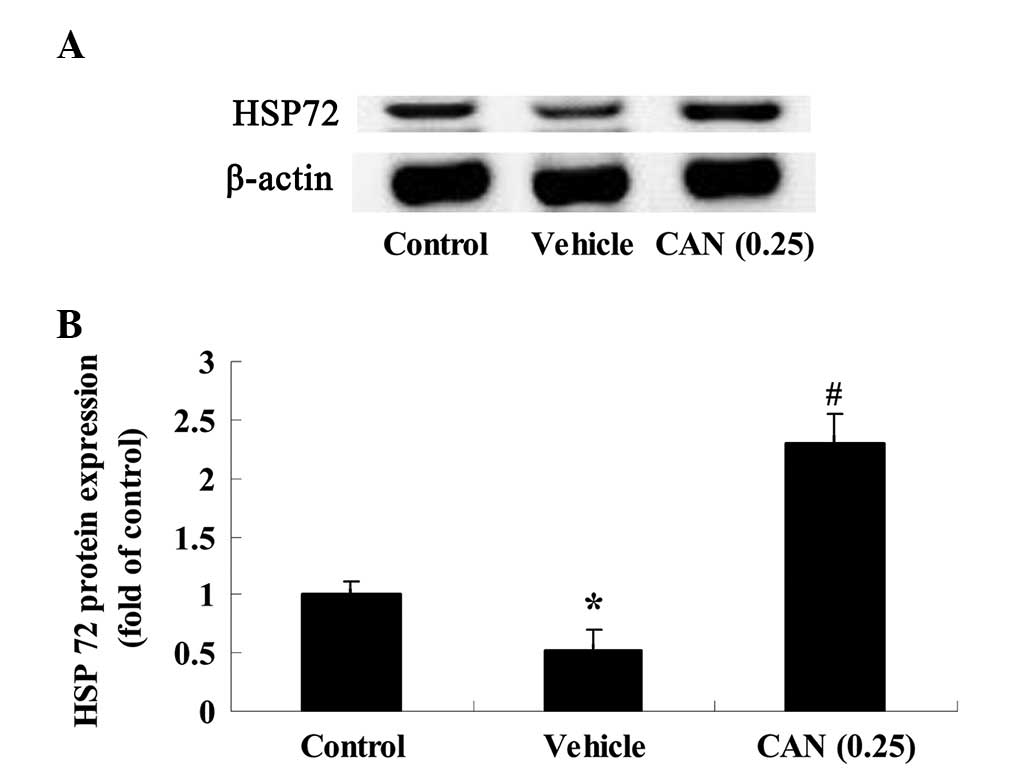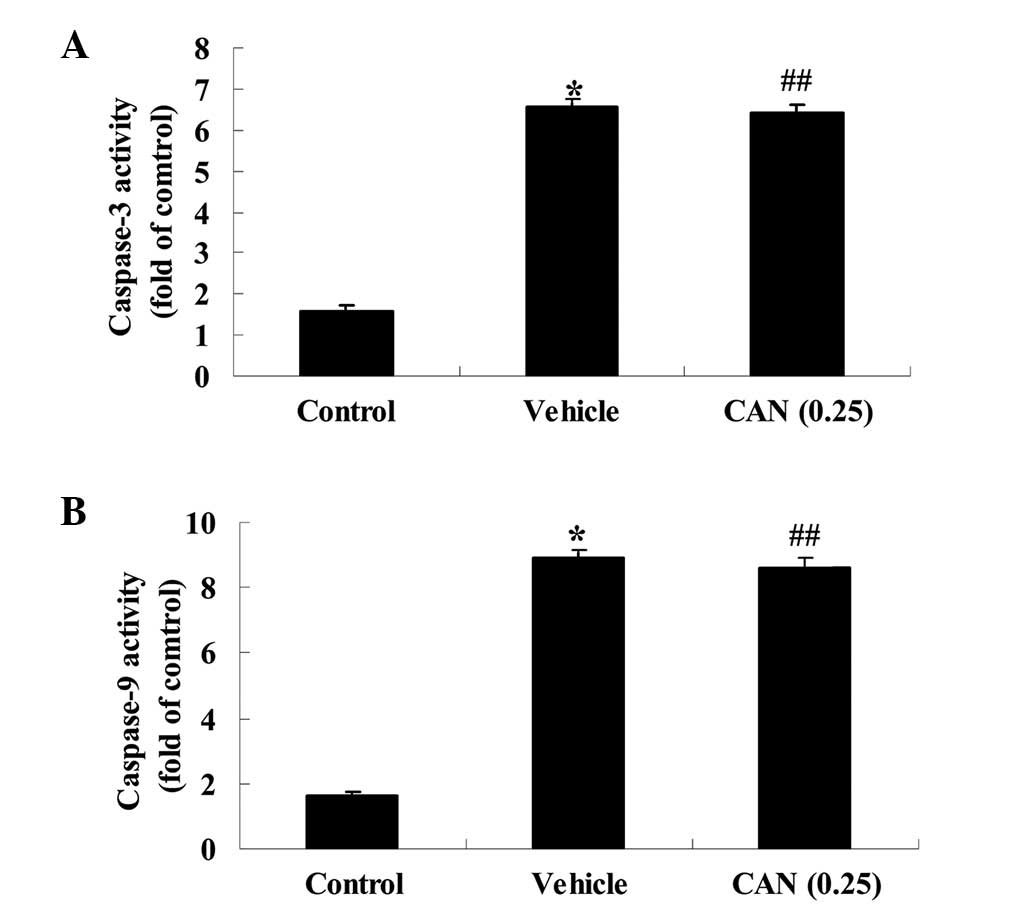|
1
|
Zhong J, He Y, Chen W, Shui X, Chen C and
Lei W: Circulating microRNA-19a as a potential novel biomarker for
diagnosis of acute myocardial infarction. Int J Mol Sci.
15:20355–20364. 2014. View Article : Google Scholar : PubMed/NCBI
|
|
2
|
Zhao YJ, Fu XH, Ma XX, Wang DY, Dong QL,
Wang YB, Li W, Xing K, Gu XS and Jiang YF: Intracoronary fixed dose
of nitro-6prusside via thrombus aspiration catheter for the
prevention of the no-reflow phenomenon following primary
percutaneous coronary intervention in acute myocardial infarction.
Exp Ther Med. 6:479–484. 2013.PubMed/NCBI
|
|
3
|
Gui D, Li Y, Chen X, Gao D, Yang Y and Li
X: HIF1 signaling pathway involving iNOS, COX2 and caspase-9
mediates the neuroprotection provided by erythropoietin in the
retina of chronic ocular hypertension rats. Mol Med Rep.
11:1490–1496. 2015.
|
|
4
|
Liu X and Tao GZ: Effects of tirofiban on
the reperfusion-related no-reflow in rats with acute myocardial
infarction. J Geriatr Cardiol. 10:52–58. 2013.PubMed/NCBI
|
|
5
|
Zaitone SA and Abo-Gresha NM: Rosuvastatin
promotes angiogenesis and reverses isoproterenol-induced acute
myocardial infarction in rats: Role of iNOS and VEGF. Eur J
Pharmacol. 691:134–142. 2012. View Article : Google Scholar : PubMed/NCBI
|
|
6
|
Xiong HY, Ma TT, Wu BT, Lin Y and Tu ZG:
IL-12 regulates B7-H1 expression in ovarian cancer-associated
macrophages by effects on NF-kB signalling. Asian Pac J Cancer
Prev. 15:5767–5772. 2014. View Article : Google Scholar
|
|
7
|
Sui X and Gao C: Huperzine A ameliorates
damage induced by acute myocardial infarction in rats through
antioxidant, anti-apoptotic and anti-inflammatory mechanisms. Int J
Mol Med. 33:227–233. 2014.
|
|
8
|
Qiao S, Xie H, Wang C, Wu X, Liu H and Liu
C: Delayed anesthetic preconditioning protects against myocardial
infarction via activation of nuclear factor-kB and upregulation of
autophagy. J Anesth. 27:251–260. 2013. View Article : Google Scholar
|
|
9
|
Tang M, Wang Y, Han S, Guo S, Xu N and Guo
J: Endogenous PGE(2) induces MCP-1 expression via EP4/p38 MAPK
signaling in melanoma. Oncol Lett. 5:645–650. 2013.PubMed/NCBI
|
|
10
|
Martin T, Cardarelli PM, Parry GC, Felts
KA and Cobb RR: Cytokine induction of monocyte chemoattractant
protein-1 gene expression in human endothelial cells depends on the
cooperative action of NF-kappa B and AP-1. Eur J Immunol.
27:1091–1097. 1997. View Article : Google Scholar : PubMed/NCBI
|
|
11
|
Valen G, Hansson GK, Dumitrescu A and
Vaage J: Unstable angina activates myocardial heat shock protein
72, endothelial nitric oxide synthase, and transcription factors
NFkappaB and AP-1. Cardiovasc Res. 47:49–56. 2000. View Article : Google Scholar : PubMed/NCBI
|
|
12
|
Xie SL, Wang JF, Nie RQ, Yuan WL, Li F and
Lin YQ: The expression and significance of activator protein-1 and
matrix metalloproteinases in the human heart post acute myocardial
infarction. Zhonghua Nei Ke Za Zhi. 48:205–207. 2009.In Chinese.
PubMed/NCBI
|
|
13
|
Tanonaka K, Toga W, Yoshida H, Furuhama K
and Takeo S: Effect of long-term treatment with trandolapril on
Hsp72 and Hsp73 induction of the failing heart following myocardial
infarction. Br J Pharmacol. 134:969–976. 2001. View Article : Google Scholar : PubMed/NCBI
|
|
14
|
Marunouchi T, Araki M, Murata M, Takagi N
and Tanonaka K: Possible involvement of HSP90-HSF1 multichaperone
complex in impairment of HSP72 induction in the failing heart
following myocardial infarction in rats. J Pharmacol Sci.
123:336–346. 2013. View Article : Google Scholar : PubMed/NCBI
|
|
15
|
Gholitabar S and Roshan VD: Effect of
treadmill exercise and Ferula gummosa on myocardial HSP72, vascular
function, and antioxidant defenses in spontaneously hypertensive
rats. Clin Exp Hypertens. 35:347–354. 2013. View Article : Google Scholar
|
|
16
|
Songur CM, Songur MO, Kocabeyoglu SS and
Basgut B: Effects of the AT1 receptor blocker candesartan on
myocardial ischemia/reperfusion in isolated rat hearts. Heart Surg
Forum. 17:E263–E268. 2014. View Article : Google Scholar : PubMed/NCBI
|
|
17
|
Jusufovic M, Sandset EC, Bath PM and Berge
E; Scandinavian Candesartan Acute Stroke Trial Study Group: Blood
pressure-lowering treatment with candesartan in patients with acute
hemorrhagic stroke. Stroke. 45:3440–3442. 2014. View Article : Google Scholar : PubMed/NCBI
|
|
18
|
Taniguchi Y, Takahashi N, Fukui A,
Nagano-Torigoe Y, Thuc LC, Teshima Y, Shinohara T, Wakisaka O, Ooie
T, Murozono Y, et al: Candesartan restored cardiac Hsp72 expression
and tolerance against reperfusion injury in hereditary
insulin-resistant rats. Cardiovasc Res. 92:439–448. 2011.
View Article : Google Scholar : PubMed/NCBI
|
|
19
|
Marx JO, Brice AK, Boston RC and Smith AL:
Incidence rates of spontaneous disease in laboratory mice used at a
large biomedical research institution. J Am Assoc Lab Anim Sci.
52:782–791. 2013.PubMed/NCBI
|
|
20
|
Faria Tde O, Baldo MP, Simões MR, Pereira
RB, Mill JG, Vassallo DV and Stefanon I: Body weight loss after
myocardial infarction in rats as a marker of early heart failure
development. Arch Med Res. 42:274–280. 2011. View Article : Google Scholar : PubMed/NCBI
|
|
21
|
Zeng KW, Zhang T, Fu H, Liu GX and Wang
XM: Schisandrin B exerts anti-neuroinflammatory activity by
inhibiting the Toll-like receptor 4-dependent MyD88/IKK/NF-kB
signaling pathway in lipopolysaccharide-induced microglia. Eur J
Pharmacol. 692:29–37. 2012. View Article : Google Scholar : PubMed/NCBI
|
|
22
|
Hoda MN, Li W, Ahmad A, Ogbi S, Zemskova
MA, Johnson MH, Ergul A, Hill WD, Hess DC and Sazonova IY:
Sex-independent neuroprotection with minocycline after experimental
thrombo-embolic stroke. Exp Transl Stroke Med. 3:162011. View Article : Google Scholar
|
|
23
|
Hoda MN, Siddiqui S, Herberg S,
Periyasamy-Thandavan S, Bhatia K, Hafez SS, Johnson MH, Hill WD,
Ergul A, Fagan SC and Hess DC: Remote ischemic perconditioning is
effective alone and in combination with intravenous tissue-type
plasminogen activator in murine model of embolic stroke. Stroke.
43:2794–2799. 2012. View Article : Google Scholar : PubMed/NCBI
|
|
24
|
Lv P, Zhou M, He J, Meng W, Ma X, Dong S,
Meng X, Zhao X, Wang X and He F: Circulating miR-208b and miR-34a
are associated with left ventricular remodeling after acute
myocardial infarction. Int J Mol Sci. 15:5774–5788. 2014.
View Article : Google Scholar : PubMed/NCBI
|
|
25
|
Lee SR, Noh SJ, Pronto JR, Jeong YJ, Kim
HK, Song IS, Xu Z, Kwon HY, Kang SC, Sohn EH, et al: The critical
roles of zinc: Beyond impact on myocardial signaling. Korean J
Physiol Pharmacol. 19:389–399. 2015. View Article : Google Scholar : PubMed/NCBI
|
|
26
|
Suzuki H, Kusuyama T, Omori Y, Soda T,
Tsunoda F, Sato T, Shoji M, Iso Y, Kondo T, Koba S, et al:
Inhibitory effect of candesartan cilexetil on left ventricular
remodeling after myocardial infarction. Int Heart J. 47:715–725.
2006. View Article : Google Scholar : PubMed/NCBI
|
|
27
|
Jiang P, Li C, Xiang Z and Jiao B:
Tanshinone IIA reduces the risk of Alzheimer's disease by
inhibiting iNOS, MMP-2 and NF-kBp65 transcription and translation
in the temporal lobes of rat models of Alzheimer's disease. Mol Med
Rep. 10:689–694. 2014.PubMed/NCBI
|
|
28
|
Lee KF, Chen JH, Teng CC, Shen CH, Hsieh
MC, Lu CC, Lee KC, Lee LY, Chen WP, Chen CC, et al: Protective
effects of Hericium erinaceus mycelium and its isolated erinacine A
against ischemia-injury-induced neuronal cell death via the
inhibition of iNOS/p38 MAPK and nitrotyrosine. Int J Mol Sci.
15:15073–15089. 2014. View Article : Google Scholar : PubMed/NCBI
|
|
29
|
Bian SH, Yu MY and Geng Q: The
relationship between the plasma concentration of urotension II (U
II) and NO, NOS in spontaneous hypertensive rats and influence of
candesartan. Zhongguo Ying Yong Sheng Li Xue Za Zhi. 25:194–195.
2632009.In Chinese.
|
|
30
|
Miller AG, Tan G, Binger KJ, Pickering RJ,
Thomas MC, Nagaraj RH, Cooper ME and Wilkinson-Berka JL:
Candesartan attenuates diabetic retinal vascular pathology by
restoring glyoxalase-I function. Diabetes. 59:3208–3215. 2010.
View Article : Google Scholar : PubMed/NCBI
|
|
31
|
Wang Y, Ma W and Zheng W: Deguelin, a
novel anti-tumorigenic agent targeting apoptosis, cell cycle arrest
and anti-angiogenesis for cancer chemoprevention. Mol Clin Oncol.
1:215–219. 2013.
|
|
32
|
Korkmaz S, Atmanli A, Li S, Radovits T,
Hegedűs P, Barnucz E, Hirschberg K, Loganathan S, Yoshikawa Y,
Yasui H, et al: Superiority of zinc complex of acetylsalicylic acid
to acetylsalicylic acid in preventing postischemic myocardial
dysfunction. Exp Biol Med (Maywood). 240:1247–1255. 2015.
View Article : Google Scholar
|
|
33
|
Basso C, Calabrese F, Angelini A, Carturan
E and Thiene G: Classification and histological,
immunohistochemical, and molecular diagnosis of inflammatory
myocardial disease. Heart Fail Rev. 18:673–681. 2013. View Article : Google Scholar
|
|
34
|
Hadi NR, Yousif NG, Abdulzahra MS,
Mohammad BI, Al-Amran FG, Majeed ML and Yousif MG: Role of NF-κβ
and oxidative pathways in atherosclerosis: Cross-talk between
dyslipidemia and candesartan. Cardiovasc Ther. 31:381–387. 2013.
View Article : Google Scholar : PubMed/NCBI
|
|
35
|
Ishrat T, Pillai B, Ergul A, Hafez S and
Fagan SC: Candesartan reduces the hemorrhage associated with
delayed tissue plasminogen activator treatment in rat embolic
stroke. Neurochem Res. 38:2668–2677. 2013. View Article : Google Scholar : PubMed/NCBI
|
|
36
|
Zhao LQ, Huang JL, Yu Y, Lu Y, Fu LJ, Wang
JL, Wang YD and Yu C: Candesartan inhibits LPS-induced expression
increase of toll-like receptor 4 and downstream inflammatory
factors likely via angiotensin II type 1 receptor independent
pathway in human renal tubular epithelial cells. Sheng Li Xue Bao.
65:623–630. 2013.PubMed/NCBI
|
|
37
|
Tharaux PL, Chatziantoniou C, Fakhouri F
and Dussaule JC: Angiotensin II activates collagen I gene through a
mechanism involving the MAP/ER kinase pathway. Hypertension.
36:330–336. 2000. View Article : Google Scholar : PubMed/NCBI
|
|
38
|
Traister A, Walsh M, Aafaqi S, Lu M, Dai
X, Henkleman MR, Momen A, Zhou YQ, Husain M, Arab S, et al:
Mutation in integrin-linked kinase (ILK(R211A)) and heat-shock
protein 70 comprise a broadly cardioprotective complex. PLoS One.
8:e773312013. View Article : Google Scholar : PubMed/NCBI
|
|
39
|
Yadav HN, Singh M and Sharma PL:
Pharmacological inhibition of GSK-3β produces late phase of
cardioprotection in hyperlipidemic rat: Possible involvement of HSP
72. Mol Cell Biochem. 369:227–233. 2012. View Article : Google Scholar : PubMed/NCBI
|
|
40
|
Torrente MP and Shorter J: The metazoan
protein disaggregase and amyloid depolymerase system: Hsp110,
Hsp70, Hsp40, and small heat shock proteins. Prion. 7:457–463.
2013. View Article : Google Scholar
|
|
41
|
Chen C, Du P and Wang J: Paeoniflorin
ameliorates acute myocardial infarction of rats by inhibiting
inflammation and inducible nitric oxide synthase signaling
pathways. Mol Med Rep. 12:3937–3943. 2015.PubMed/NCBI
|
|
42
|
Nural-Guvener HF, Zakharova L, Nimlos J,
Popovic S, Mastroeni D and Gaballa MA: HDAC class I inhibitor,
Mocetinostat, reverses cardiac fibrosis in heart failure and
diminishes CD90+ cardiac myofibroblast activation. Fibrogenesis
Tissue Repair. 7:102014. View Article : Google Scholar : PubMed/NCBI
|
|
43
|
Moudgil R, Musat-Marcu S, Xu Y, Kumar D
and Jugdutt BI: Increased AT2R protein expression but not increased
apoptosis during cardioprotection induced by AT1R blockade. Can J
Cardiol. 18:873–883. 2002.PubMed/NCBI
|















